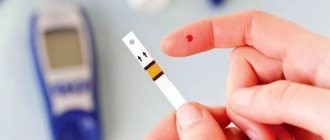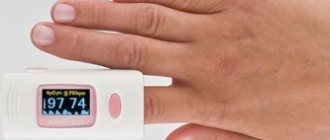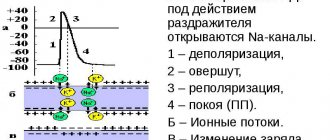A standard venous catheter is a long and flexible polyurethane tube with a small diameter, one end of which is inserted into the vein and the opposite end is brought out. Such a catheter is installed under sterile conditions and is used to deliver drugs and medical solutions into the patient’s circulatory system. The rationale for installing a venous catheter is the need for long-term parenteral administration of drugs.
A venous catheter can be installed in one of the central or peripheral veins. A peripheral venous catheter is inserted into well-palpable healthy veins of the head, neck and arms. A central venous catheter can be placed in the femoral, subclavian, or jugular veins.
What is a venous catheter
The instrument is a thin hollow tube (cannula) equipped with a trocar (a hard pin with a sharp end) to facilitate insertion into the vessel. After administration, only the cannula is left, through which the medicinal solution enters the bloodstream, and the trocar is removed.
Before diagnosis, the doctor conducts an examination of the patient, which includes:
- Ultrasound of veins.
- Chest X-ray.
- MRI.
- Contrast phlebography.
How long does installation take? The procedure lasts on average about 40 minutes. Anesthesia at the insertion site may be required when inserting a tunneled catheter.
It takes about one hour to rehabilitate the patient after installing the instrument; the sutures are removed after seven days.
Modern devices
In medical practice, catheters with steel needles are currently practically not used, because the comfort and safety of the patient come to the fore. Unlike the metal model, a plastic peripheral intravenous catheter can follow the bends of the vein. Thanks to this, the risk of injury is significantly reduced. The likelihood of blood clots and infiltrates is also minimized. In this case, the time that such a catheter remains in the vessel increases significantly.
Patients who have such a plastic device installed can move calmly without fear of damaging their veins.
Classification
Intravenous catheters are classified according to many criteria.
By purpose
There are two types: central venous (CVC) and peripheral venous (PVC).
CVCs are designed for catheterization of large veins, such as the subclavian, internal jugular, and femoral. Using this instrument, medications and nutrients are administered and blood is drawn.
PVC is installed in peripheral vessels. As a rule, these are the veins of the extremities.
Comfortable butterfly catheters for peripheral veins are equipped with soft plastic wings with which they are attached to the skin
The “butterfly” is used for short-term infusions (up to 1 hour), since the needle is constantly in the vessel and can damage the vein if held longer. They are usually used in pediatrics and outpatient practice for puncturing small veins.
By size
The size of venous catheters is measured in gaits and is designated by the letter G. The thinner the instrument, the larger the gaits value. Each size has its own color, the same for all manufacturers. The size is selected depending on the application.
| Size | Color | Application area |
| 14G | Orange | Rapid infusion of large volumes of blood products or fluids |
| 16G | Grey | Transfusion of large volumes of blood or fluids |
| 17G | White | Transfusion of large volumes of blood or fluids |
| 18G | Green | Routine red blood cell transfusion |
| 20G | Pink | Long courses of intravenous therapy (two to three liters per day) |
| 22G | Blue | Long courses of intravenous therapy, oncology, pediatrics |
| 24G | Yellow | Sclerotic veins, pediatrics, oncology |
| 26G | Violet | Sclerotic veins, pediatrics, oncology |
By model
There are ported and non-ported catheters. Ported ones differ from non-ported ones in that they are equipped with an additional port for introducing liquid.
By design
Single-channel catheters have a single channel and end in one or more holes. They are used for periodic and continuous administration of medicinal solutions. They are used for both emergency care and long-term therapy.
Multichannel catheters have from 2 to 4 channels. Used for simultaneous infusion of incompatible drugs, blood collection and transfusion, hemodynamic monitoring, and visualization of the structure of blood vessels and the heart. They are often used for chemotherapy and long-term administration of antibacterial drugs.
By material
| Material | pros | Minuses |
| Teflon |
|
|
| Polyethylene |
|
|
| Silicone |
|
|
| Elastomeric hydrogel |
|
|
| Polyurethane |
| |
| PVC (polyvinyl chloride) |
|
|
Materials used
The first plastic models were not very different from steel catheters. Polyethylene could have been used in their manufacture. The result was thick-walled catheters, which irritated the inner walls of blood vessels and led to the formation of blood clots. In addition, they were so rigid that they could even lead to perforation of the vessel walls. Although polyethylene itself is a flexible, inert material that does not form a loop, it is very easy to process.
Polypropylene can also be used in the production of catheters. Thin-walled models are made from it, but they are too rigid. They were mainly used to access arteries or to insert other catheters.
Later, other plastic compounds were developed, which are used in the production of these medical devices. Thus, the most popular materials are: PTFE, FEP, PUR.
The first of them is polytetrafluoroethylene. Catheters made from it glide well and do not lead to thrombus formation. They have a high level of organic tolerance and are therefore well tolerated. But thin-walled models made of this material can be compressed and form loops.
FEP (fluoroethylene propylene copolymer), also known as Teflon, has the same positive characteristics as PTFE. But, in addition, this material allows for better control of the catheter and increases its stability. A radiopaque contrast medium can be injected into such an intravenous device, which will allow it to be seen in the bloodstream.
PUR material is a well-known polyurethane. Its hardness depends on temperature. The warmer it is, the softer and more elastic it becomes. It is often used to make central intravenous catheters.
Central venous catheter
This is a long tube that is inserted into a large vessel to transport medications and nutrients. There are three access points for its installation: internal jugular, subclavian and femoral vein. The first option is most often used.
When installing a catheter in the internal jugular vein, there are fewer complications, pneumothorax occurs less often, and it is easier to stop bleeding if it occurs.
With subclavian access there is a high risk of pneumothorax and arterial damage.
When accessing through the femoral vein after catheterization, the patient will remain motionless, in addition, there is a risk of infection of the catheter. The advantages include easy entry into a large vein, which is important in case of emergency care, as well as the possibility of installing a temporary pacemaker
Kinds
There are several types of central catheters:
- Peripheral central. It is passed through a vein in the upper limb until it reaches a large vein near the heart.
- Tunnel. It is injected into a large jugular vein, through which blood returns to the heart, and is removed at a distance of 12 cm from the injection site through the skin.
- Non-tunnel. Installed in a large vein of the lower limb or neck.
- Port catheter. Inserted into a vein in the neck or shoulder. The titanium port is installed under the skin. It is equipped with a membrane that is pierced with a special needle through which fluids can be injected for a week.
Indications for use
A central venous catheter is installed in the following cases:
- To introduce nutrition if its entry through the gastrointestinal tract is impossible.
- During the behavior of chemotherapy.
- For rapid administration of large volumes of solution.
- With prolonged administration of fluids or drugs.
- During hemodialysis.
- In case of inaccessibility of veins in the arms.
- When administering substances that irritate peripheral veins.
- During blood transfusion.
- With periodic blood sampling.
Contraindications
There are several contraindications to central venous catheterization, which are relative, therefore, according to vital indications, a CVC will be installed in any case.
The main contraindications include:
- Inflammatory processes at the injection site.
- Blood clotting disorder.
- Bilateral pneumothorax.
- Clavicle injuries.
Procedure of introduction
The central catheter is placed by a vascular surgeon or interventional radiologist. The nurse prepares the workplace and the patient, helps the doctor put on sterile clothing. To prevent complications, not only installation, but also care is important.
After installation, it can remain in the vein for several weeks or even months.
Before installation, the following preparations are required:
- find out if the patient is allergic to medications;
- conduct a blood clotting test;
- stop taking certain medications a week before catheterization;
- take blood thinning medications;
- find out if you are pregnant.
The procedure is performed in a hospital or on an outpatient basis in the following order:
- Hand disinfection.
- Selection of catheterization site and skin disinfection.
- Determination of the location of the vein based on anatomical characteristics or using ultrasound equipment.
- Administering local anesthesia and making an incision.
- Reduce the catheter to the required length and rinse it in saline solution.
- Guide the catheter into the vein using a guidewire, which is then removed.
- Fixing the instrument on the skin with an adhesive plaster and installing a cap on its end.
- Apply a bandage to the catheter and mark the insertion date.
- When a port catheter is inserted, a cavity is created under the skin to accommodate it, and the incision is sutured with absorbable thread.
- Check the injection site (if it hurts, if there is bleeding or fluid discharge).
Care
Proper care of the central venous catheter is very important to prevent purulent infections:
- At least once every three days it is necessary to clean the catheter insertion hole and change the bandage.
- The junction of the dropper with the catheter should be wrapped in a sterile napkin.
- After injecting the solution, wrap the free end of the catheter with sterile material.
- Avoid touching the infusion system.
- Change infusion systems daily.
- Do not bend the catheter.
Immediately after the procedure, an x-ray is taken to ensure proper placement of the catheter. The puncture site should be checked for bleeding, and the port catheter should be washed. Wash your hands thoroughly before touching the catheter and before changing the dressing. The patient is monitored for infection, which is characterized by symptoms such as chills, swelling, induration, redness of the catheter insertion site, and fluid discharge.
At home, the patient should follow the doctor's recommendations and care for the catheter:
- Keep the puncture site dry, clean and bandaged.
- Do not touch the catheter with unwashed and undisinfected hands.
- Do not swim or shower with the instrument installed.
- Don't let anyone touch him.
- Do not engage in activities that could weaken the catheter.
- Check the puncture site daily for signs of infection.
- Rinse the catheter with saline solution.
Complications after CVC installation
Central vein catheterization can lead to complications, including:
- Puncture of the lungs with accumulation of air in the pleural cavity.
- Accumulation of blood in the pleural cavity.
- Puncture of the artery (vertebral, carotid, subclavian).
- Pulmonary embolism.
- Incorrect placement of the catheter.
- Puncture of lymphatic vessels.
- Catheter infection, sepsis.
- Heart rhythm disturbance when advancing the catheter.
- Thrombosis.
- Nerve damage.
Varieties of plastic models
Doctors can choose which catheter to place in a patient. You can find models on sale with or without additional injection ports. They can also be equipped with special fixing wings.
To protect against accidental punctures and prevent the risk of infection, special cannulas have been developed. They are equipped with a protective self-activating clip, which is installed on the needle.
For the convenience of injecting medications, an intravenous catheter with an additional port can be used. Many manufacturers place it above the wings designed for additional fixation of the device. When administering medications into such a port, there is no risk of cannula displacement.
When purchasing catheters, you should follow the recommendations of doctors. After all, these devices, although externally similar, can differ significantly in quality. It is important that the transition from needle to cannula is atraumatic, and that there is minimal resistance when inserting the catheter through the tissue. The sharpness of the needle and its sharpening angle are also important.
Experts often recommend purchasing models from such manufacturers as the BD concern, B. Braun, HMD, Wallace Ltd.
An intravenous catheter with a Braunulen port has become the standard for developed countries. It is equipped with a special valve, which prevents the possibility of reverse movement of the solution introduced into the injection compartment.
Peripheral catheter
A peripheral venous catheter is installed for the following indications:
- Inability to take liquids orally.
- Transfusion of blood and its components.
- Parenteral nutrition (administration of nutrients).
- The need for frequent administration of drugs into a vein.
- Anesthesia during surgery.
PVK cannot be used if it is necessary to administer solutions that irritate the inner surface of blood vessels, a high infusion rate is required, and also when transfusing large volumes of blood
How to choose veins
A peripheral venous catheter can only be inserted into peripheral vessels and cannot be installed into central ones. It is usually placed on the back of the hand and on the inside of the forearm. Rules for choosing a vessel:
- Well visible veins.
- Vessels that are not on the dominant side, for example, for right-handed people should be chosen on the left side).
- On the other side of the surgical site.
- If there is a straight section of the vessel corresponding to the length of the cannula.
- Vessels with large diameter.
PVC should not be placed in the following vessels:
- In the veins of the legs (high risk of thrombus formation due to low blood flow speed).
- On the bends of the arms, near the joints.
- In a vein located close to an artery.
- In the median ulna.
- In poorly visible saphenous veins.
- In weakened sclerotic.
- In deep-lying ones.
- On infected skin areas.
How to put
Placement of a peripheral venous catheter can be performed by a trained nurse. There are two ways to grab it in your hand: longitudinal grip and transverse grip. The first option is more often used, which allows you to more securely fix the needle in relation to the catheter tube and prevent it from going into the cannula. The second option is usually preferred by nurses who are accustomed to performing vein punctures with a needle.
Algorithm for placing a peripheral venous catheter:
- The puncture site is treated with alcohol or an alcohol-chlorhexidine mixture.
- A tourniquet is applied, after the vein is filled with blood, the skin is taut and the cannula is installed at a slight angle.
- Venipuncture is performed (if blood appears in the imaging chamber, it means the needle is in the vein).
- Once blood appears in the imaging chamber, the needle stops advancing and must now be removed.
- If, after removing the needle, the vein is lost, reinserting the needle into the catheter is unacceptable; you need to pull out the catheter completely, connect it to the needle and reinsert it.
- After the needle is removed and the catheter is in the vein, you need to put a plug on the free end of the catheter, fix it on the skin with a special bandage or adhesive tape and flush the catheter through the additional port if it is ported, and the attached system if it is not ported. Rinsing is necessary after each infusion of liquid.
Caring for a peripheral venous catheter follows approximately the same rules as for a central one. It is important to maintain asepsis, wear gloves, avoid touching the catheter, change plugs more often and wash the instrument after each infusion. It is necessary to monitor the bandage, change it every three days and do not use scissors when changing the adhesive plaster bandage. The puncture site should be carefully observed.
Although catheterization of peripheral veins is considered less dangerous than central veins, if the rules of installation and care are not followed, unpleasant consequences are possible
Complications
Nowadays, consequences after a catheter occur less and less, thanks to improved models of instruments and safe and low-traumatic methods of their installation.
Complications that may occur include the following:
- bruises, swelling, bleeding at the insertion site;
- infection in the area where the catheter is installed;
- inflammation of the vein walls (phlebitis);
- formation of a blood clot in a vessel.
Prevention
To prevent complications, the catheter installation site is inspected daily and the sutures are treated with antiseptics.
If blood leaks from their wounds, the bandages are changed without delay. To prevent infection, it is necessary to thoroughly rinse the catheter tubes with saline solution after each manipulation:
- administration of antibiotics;
- administration of nutrient solutions;
- administration of blood components.
After rinsing, a small amount of heparin-containing isotonic sodium chloride solution is injected into the tube.
When installing a catheter for a long time, it is recommended to apply a compress with thrombolytic ointments in the area of the puncture and 3-5 cm above it.
General recommendations
There are certain rules for working with devices for intravenous drug administration.
All health care workers who will select or install an intravenous catheter should know them. The algorithm for their use provides that the first installation is carried out from the non-dominant side at a distal distance. That is, the best option is the back of the hand. Each subsequent installation (if long-term treatment is necessary) is done on the opposite hand. The catheter is inserted higher along the vein. Compliance with this rule allows you to minimize the likelihood of developing phlebitis.
If the patient undergoes surgery, it is better to install a green catheter. It is the thinnest of those through which blood products can be transfused.
Possible complications
The algorithm for placing a peripheral venous catheter is quite simple. However, the risk of complications is very high, since the skin is injured.
- Phlebitis is sepsis of a blood vessel associated with mechanical stress or infection.
- Thrombophlebitis.
- Thrombosis.
- Equipment bending.
A common problem is infection, especially with penetration into the circulatory system. Sometimes it can even be deadly. To prevent the spread of pathogenic bacteria, various preventive measures are used, including surface treatment or impregnation of the catheter with antiseptic or antibacterial compounds.
Care
The condition for effective treatment and prevention of complications is the use of correct equipment, installation and proper care of the instrument.
To protect the blood from infection, it is necessary to come into contact with the catheter less often and follow the rules of asepsis.
After use, the equipment must be rinsed with saline solution.
In addition, to extend the service life of the product and eliminate thrombosis, it is necessary to rinse the instrument additionally 4-6 times a day with sodium heparin solution and saline solution in the proportion of 2500 IU of heparin per 100 ml of saline solution.
The plugs should be changed quite often; you should not use products that could be infected.
It is important to constantly check the fixation bandage.
Do not use scissors when changing the adhesive bandage.
Employees of a medical institution are required to regularly record the volume of drugs administered and evaluate the results achieved.
Swelling, redness of the skin, temperature, pain, blockage and leakage of the catheter are reasons to remove it from the person’s vein and stop the procedure.
It is recommended to change the area of peripheral vein catheterization every 2-3 days. Even in the absence of visible indications, routine catheter replacement at specified intervals is carried out to ensure its effective operation. According to clinical studies, after 72-96 hours, in most cases, infiltration (leakage of fluid into the surrounding tissue) and disruption of the tube’s patency are observed, that is, the inability of fluid, including medicinal compounds, to enter the blood vessel.
How to choose a site for catheterization?
First of all, straight sections of the distal veins, the largest and softest to the touch, and well filled, are considered for catheterization. As a rule, preference is given to the lateral and medial saphenous veins of the arm - these are the intermediate venous beds of the elbow and forearm. Less commonly, if venipuncture of the former is impossible, metacarpal and digital ones are used.
It should be noted that inserting a catheter yourself is an extremely difficult task, especially for inexperienced people, since most manipulations require both hands, so you should at least invite someone to help. Training the skill of gaining access to the bloodstream using improvised means will also not be superfluous.
Choosing a site for catheterization is no different from the procedures for placing intravenous injections or drips. You can learn more about this by studying visual photos and diagrams here.











